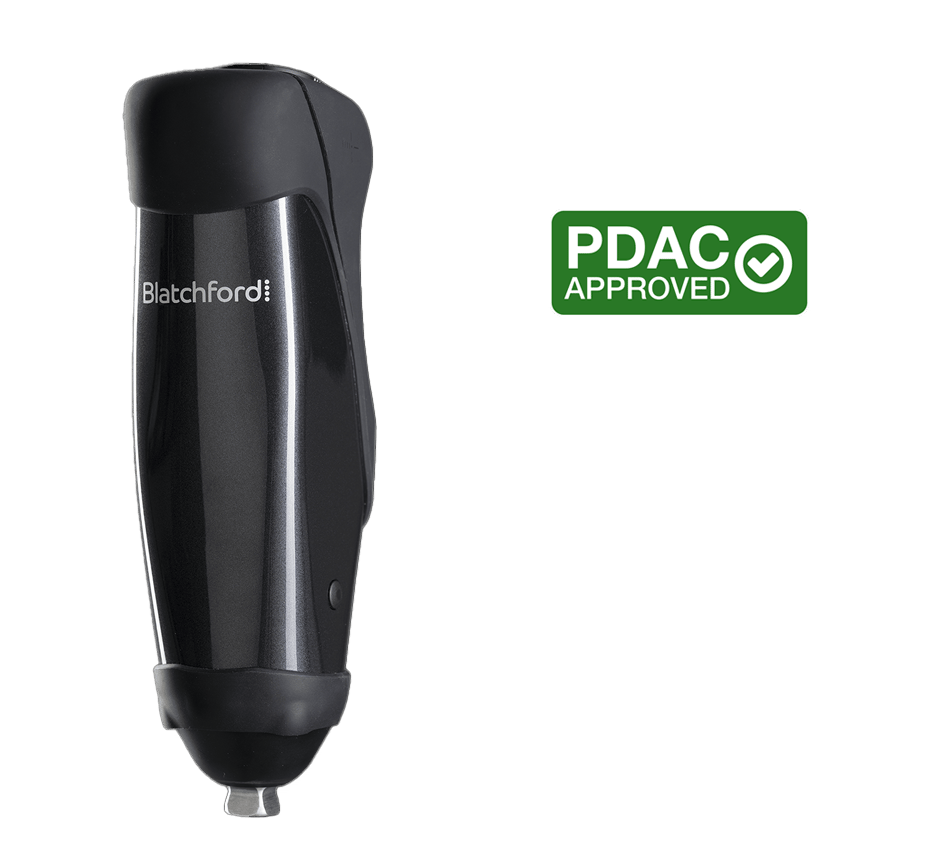Orion3
The water-resistant Orion3 is equipped with enhanced features, combining everything wearers love about this intelligent microprocessor knee with more advanced technology. Orion3 is designed with Blatchford’s patented Performance Response Technology™ (PRT™). This allows amputees to safely replicate natural limb movement across different terrains and speeds, for a superior walking experience. Stringent tests certify that Orion3 is fully water resistant to IP55 , meaning wearers can confidently take on outdoor activities come rain or shine.
Water-Resistant
After being rigorously tested and exposed to water jets from multiple directions, this microprocessor knee is internationally certified to IP-55.
This allows wearers to confidently go about their daily lives without feeling limited by the weather. From light drizzle to heavy showers, Orion3 is fully equipped to handle mother nature’s downpours, equipped with efficient drainage holes, water automatically drains from the device. This enhanced peace of mind will help wearers feel more confident when out and about, with exploring and adventure no longer off limits.
Enhanced Stability Performance
Enhanced Stability Performance (ESP) increases the user’s confidence and independence, reducing the risk of stumbles or falls and ensuring more balanced limb loading for greater long term health and protection.
ESP adapts hydraulic resistance in real time, providing optimal stance support whether walking in a crowded environment, on uneven terrain, slopes, steps and now also when standing. With situational awareness, Orion3 continuously monitors the user’s activity and responds accordingly for greater safety.
-
Controlled Stance Support
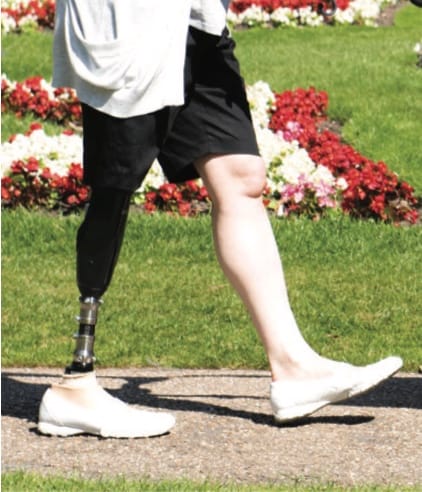
Supportive resistance throughout stance phase provides optimal stability for walking with greater safety and less effort on all-terrain.
-
Water-Resistant

Water resistant protection allows wearers to take on outdoor activities with safety and confidence, no longer feeling limited by the elements.
-
Standing Support
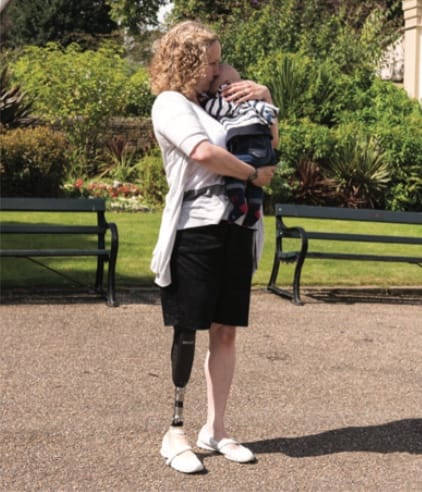
Maximum resistance stabilises knee, on both flat and slopes, encouraging better posture and balanced loading to relieve pressure on sound limb and lower back.
-
Stumble Recovery

Stance resistance engages during swing phase extension to ensure knee stability should the user stumble.
-
Dynamic Slope & Stair Descent
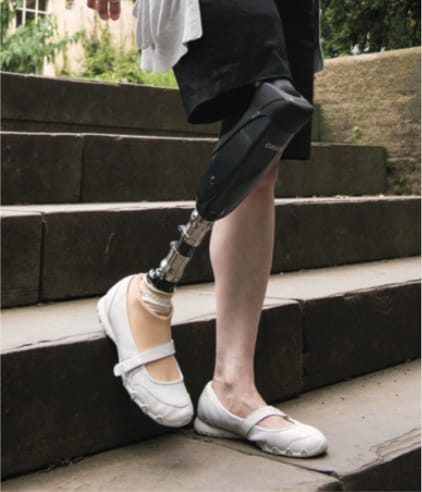
The Orion now recognizes stair decent! A new algorithm has enabled the stairs pneumatic value to be selected even earlier, helping the limb to extend fully from the first step and making stairs descent easier and more predictable
-
Supported Sitting

Progressive hydraulic resistance ensures greater support and control to sit down with safety and confidence and more balanced loading across both limbs.
Natural Efficient Motion
An optional feature designed to provide a higher resistance to stance flexion when sudden deceleration occurs and causes the knee to be unstable. This provides the user with increased support resulting in more control and stability.
-
Optimal Stance Release
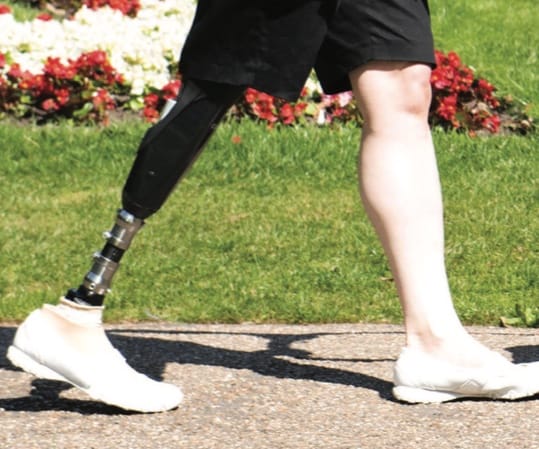
Orion3 releases high resistance just before the knee bends for optimal safety, easy knee flexion and reduced walking effort.
-
Adaptive Speed Control
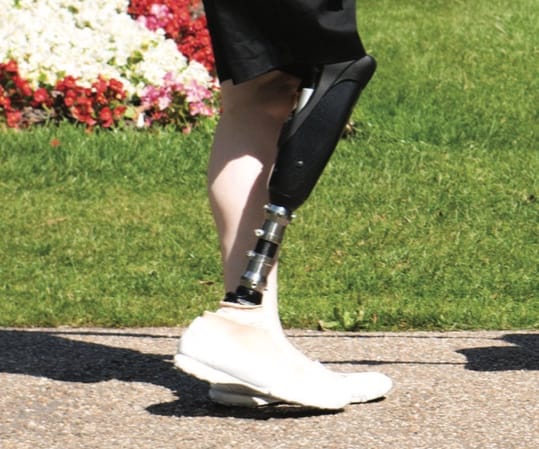
By sensing changes in walking speed, Orion3 dynamically adapts pneumatic control in real time for a smooth, natural and energy efficient swing.*
-
Terminal Swing Damping
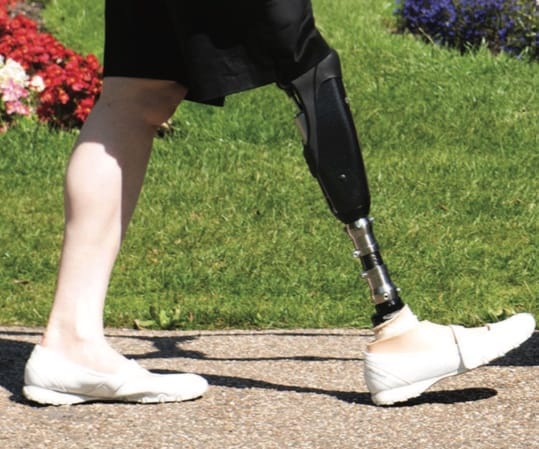
Swing phase extension is damped in late swing to soften knee movement and prevent terminal swing impact.
*Studies have shown the reduced physiological cost of walking, with reduction in energy expenditure by up to 20% – please refer to our clinical compendium for further details.
Real Life Stories
Ian’s Story
Ben’s Story
Chris & Denise’s Story
Becky’s Story
Smart Programming App


The Orion3 Programming App for clinicians is available on iOS and Android. With its simple to follow automated smart programming, you can complete limb set up with fewer steps whilst still having access to more advanced fine tuning if required.
This app is for clinicians who have completed a Blatchford approved training course and requires an authorization code:
- Download the app from the App Store, search for “Orion3”.
If using an iPad please choose “iPhone Only” when searching. - On first use, send the 8 digit “Authorization Request Code” to your Blatchford representative.
- Enter the 12 digit code provided by your Blatchford representative into the app.
- Start programming Orion3!
For support questions please contact Blatchford Technical Support at [email protected]
* Compatible with all models of iPad, iPhone and iPod Touch running iOS v9 or later.
Orion3 Clinical Evidence Reference
Improvements in Clinical Outcomes using microprocessor-controlled prosthetic knees
-
Safety
- Significantly reduced number of falls1,2
- Reduced centre-of-pressure fluctuations by 9-11% with standing support active when standing on sloped ground3
- Less cognitive demand during walking, leading to reduced postural sway4
-
Mobility
- Increased walking speed5
- Easier to walk at different speeds6
- Higher scores in mobility-related patient-reported outcome measures7
- More natural gait6,8
- Easier to walk on slopes6
-
Energy expenditure
- Reduced energy expenditure compared to mechanical knees9-13
- Equivalent energy expenditure to other MPKs14
- Reduced self-perceived effort6,8
- Energy expenditure closer to that of able-bodied control subjects15
- Able to walk further before becoming tired6
-
Symmetry
- Better step length symmetry5
- Reduced loading asymmetry with standing support active when standing on sloped ground3
-
User satisfaction
- Reduced fear of falling1
- Reduced limitations due to an emotional problem8
- Preference over other prosthetic knees1,14
-
Health Economics
- Reductions in direct and indirect healthcare costs when using an MPK16
References
-
Full Reference Listing
-
Kaufman KR, Bernhardt KA, Symms K.
Functional assessment and satisfaction of transfemoral amputees with low mobility (FASTK2): A clinical trial of microprocessor-controlled vs. non-microprocessor-controlled knees. Clin Biomech 2018; 58: 116–122.
-
Campbell JH, Stevens PM, Wurdeman SR.
OASIS 1: Retrospective analysis of four different microprocessor knee types. Journal of Rehabilitation and Assistive Technologies Engineering. 2020;7:2055668320968476.
-
McGrath M, Laszczak P, Zahedi S, et al.
Microprocessor knees with ‘standing support’ and articulating, hydraulic ankles improve balance control and inter-limb loading during quiet standing. J Rehabil Assist Technol Eng 2018; 5: 2055668318795396.
-
Heller BW, Datta D, Howitt J.
A pilot study comparing the cognitive demand of walking for transfemoral amputees using the Intelligent Prosthesis with that using conventionally damped knees. Clin Rehabil 2000; 14: 518–522.
-
Chin T, Maeda Y, Sawamura S, et al.
Successful prosthetic fitting of elderly trans-femoral amputees with Intelligent Prosthesis (IP): a clinical pilot study. Prosthet Orthot Int 2007; 31: 271–276.
-
Datta D, Howitt J.
Conventional versus microchip controlled pneumatic swing phase control for trans-femoral amputees: user’s verdict. Prosthet Orthot Int 1998; 22: 129–135.
-
Wurdeman SR, Stevens PM, Campbell JH.
Mobility analysis of amputees (MAAT 3): Matching individuals based on comorbid health reveals improved function for above-knee prosthesis users with microprocessor knee technology. Assist Technol 2018; 1–7.
-
Saglam Y, Gulenc B, Birisik F, et al.
The quality of life analysis of knee prosthesis with complete microprocessor control in trans-femoral amputees. Acta Orthop Traumatol Turc 2017; 51: 466e469.
-
Chin T, Sawamura S, Shiba R, et al.
Energy expenditure during walking in amputees after disarticulation of the hip: a microprocessor-controlled swing-phase control knee versus a mechanical-controlled stance-phase control knee. J Bone Joint Surg Br 2005; 87: 117–119.
-
Datta D, Heller B, Howitt J.
A comparative evaluation of oxygen consumption and gait pattern in amputees using Intelligent Prostheses and conventionally damped knee swing-phase control. Clin Rehabil 2005; 19: 398–403.
-
Buckley JG, Spence WD, Solomonidis SE.
Energy cost of walking: comparison of “intelligent prosthesis” with conventional mechanism. Arch Phys Med Rehabil 1997; 78: 330–333.
-
Taylor MB, Clark E, Offord EA, et al.
A comparison of energy expenditure by a high level trans-femoral amputee using the Intelligent Prosthesis and conventionally damped prosthetic limbs. Prosthet Orthot Int 1996; 20: 116–121.
-
Kirker S, Keymer S, Talbot J, et al.
An assessment of the intelligent knee prosthesis. Clin Rehabil 1996; 10: 267–273.
-
Chin T, Machida K, Sawamura S, et al.
Comparison of different microprocessor controlled knee joints on the energy consumption during walking in trans-femoral amputees: intelligent knee prosthesis (IP) versus C-leg. Prosthet Orthot Int 2006; 30: 73–80.
-
Chin T, Sawamura S, Shiba R, et al.
Effect of an Intelligent Prosthesis (IP) on the walking ability of young transfemoral amputees: comparison of IP users with able-bodied people. Am J Phys Med Rehabil 2003; 82: 447–451.
-
Chen C, Hanson M, Chaturvedi R, et al.
Economic benefits of microprocessor controlled prosthetic knees: a modeling study. J Neuroengineering Rehabil 2018; 15: 62.
-
The PDAC-Approved badge denotes a product that has been approved by the Pricing, Data Analysis and Coding (PDAC) contractor for one or more of the prior authorization codes as specified in the Healthcare Common Procedure Coding System (HCPCS) codes.
